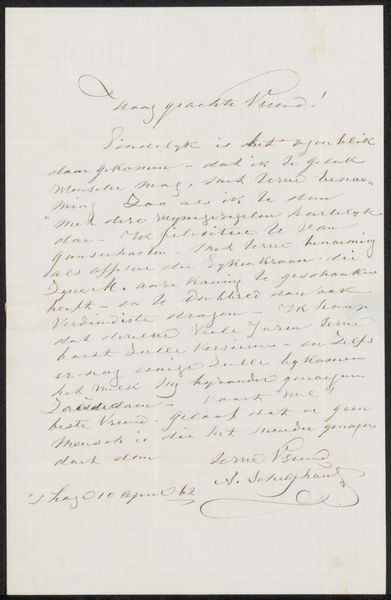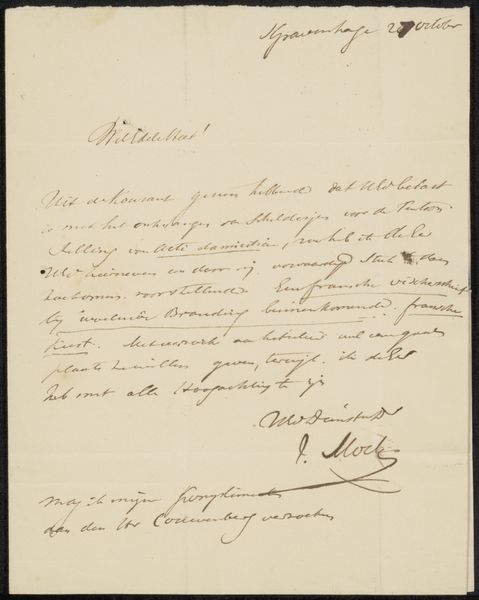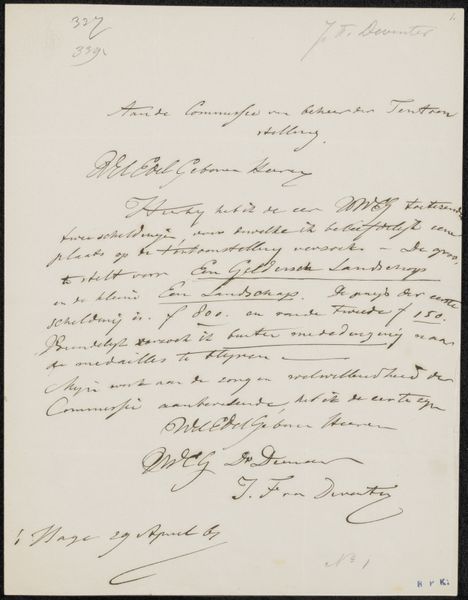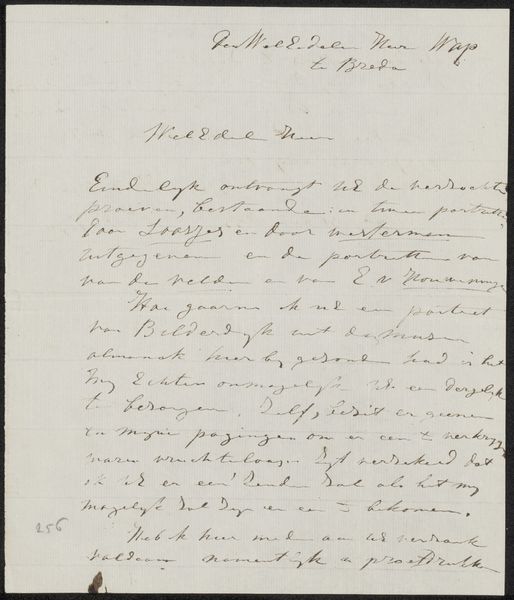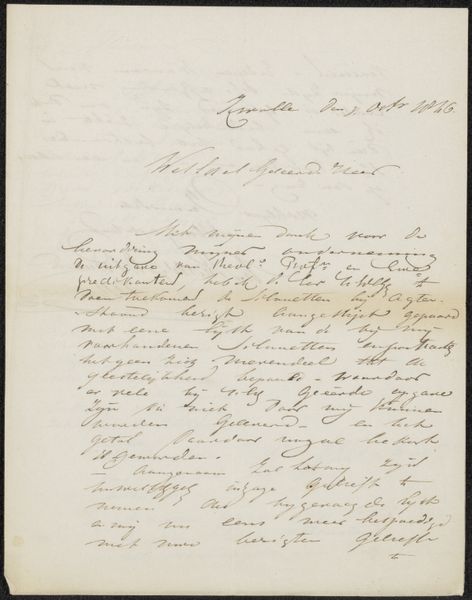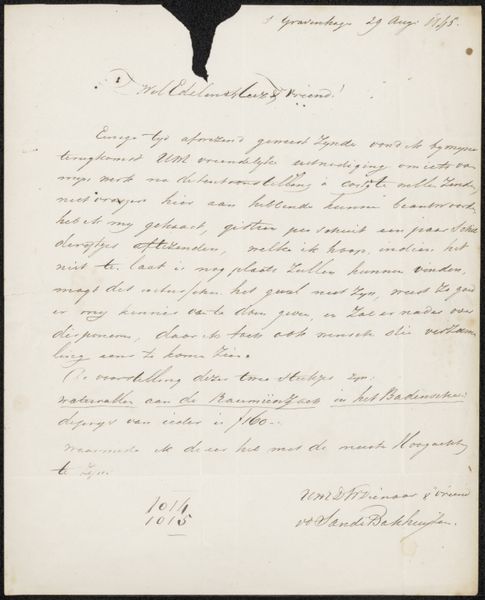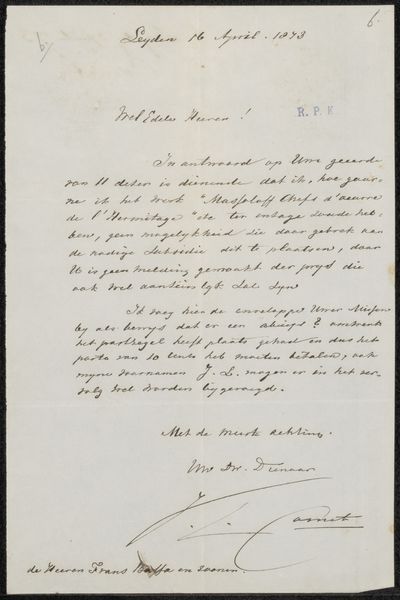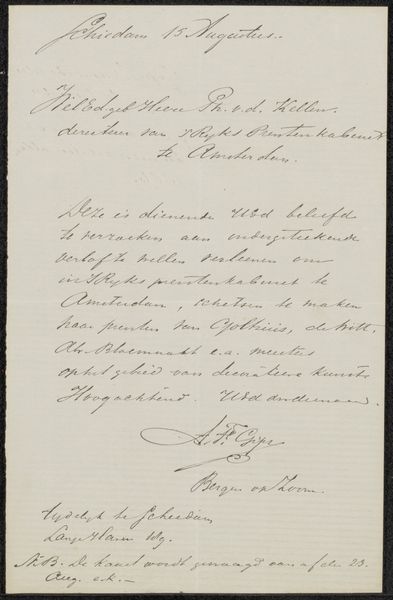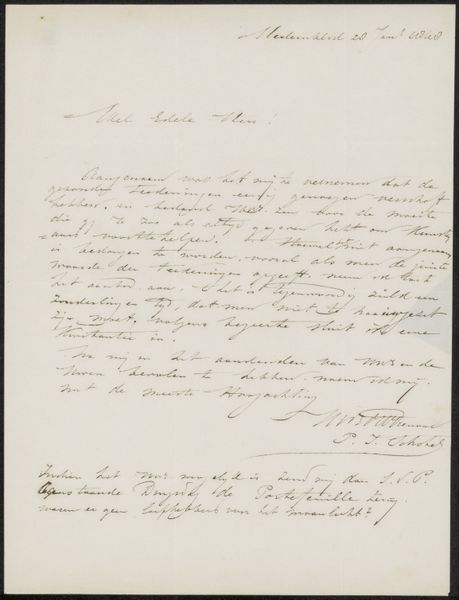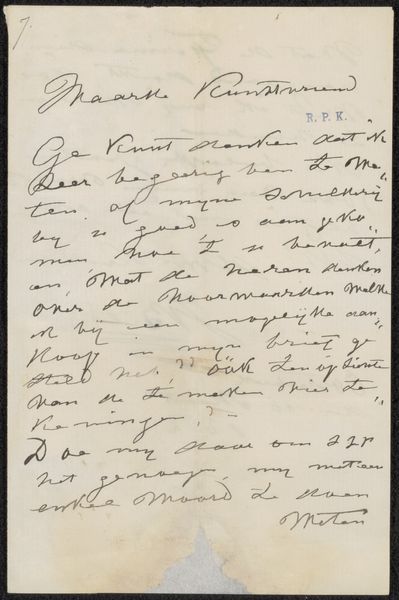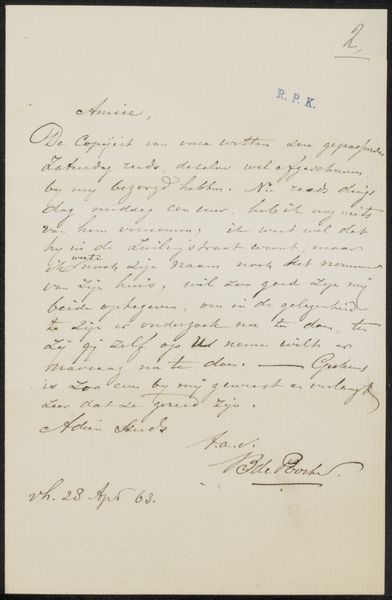
drawing, paper, ink
#
drawing
#
ink paper printed
#
paper
#
ink
Copyright: Rijks Museum: Open Domain
Curator: This drawing in ink on paper is titled "Brief aan Christiaan Kramm," dating back to approximately 1864-1865, by Jan Karel Jacob de Jonge. Editor: My immediate sense is one of intimate history—a direct glimpse into someone’s personal thoughts through the fragile materiality of ink and paper. Curator: Absolutely. It is a letter. Notice the graceful handwriting, reflecting 19th-century communication, and how this letter becomes a relic imbued with an atmosphere of a different, less instant, time. I wonder what Christiaan Kramm felt reading this, likely penned carefully and carried with care. The names mentioned carry cultural weight— perhaps clues to intellectual circles and networks. It suggests an art world dialog occurring. Editor: The contrast between the delicate script and the stark white of the paper emphasizes the deliberate nature of each stroke. See how the arrangement of text guides the eye; vertically oriented lines feel carefully placed. Even without deciphering the language, one perceives the conscious design choices involved. Curator: Indeed, it highlights a world where communication wasn't fleeting but carefully constructed, bearing the marks of the writer’s personality. This physicality links the creator and reader across time—much unlike an email today. This letter’s tangible nature means that the document is more than simply text on paper. The physical artifact tells a unique story about how culture unfolds over decades and generations. Editor: I am particularly drawn to how the ink varies in tone and density, signaling variations in pressure. In turn, we learn something more specific and intimate about the writer’s speed or pausing as they are communicating this information. There are numbers included here. Do you interpret that numerically or perhaps even musically? The staccato repetition might resemble musical phrasing. Curator: That’s a compelling parallel! Viewing it through that musical, structural lens emphasizes how all expressive activities possess shared structures of emphasis and pattern making. The list, perhaps an inventory, suggests a creative infrastructure, reflecting his role and influence. To encounter this epistolary object is to commune directly with past creativity—and inspires me. Editor: Likewise! De Jonge offers so much, from textual structure to careful materiality. One gains insight regarding how they navigated art, relationships, and the business of the Dutch art community!
Comments
No comments
Be the first to comment and join the conversation on the ultimate creative platform.

